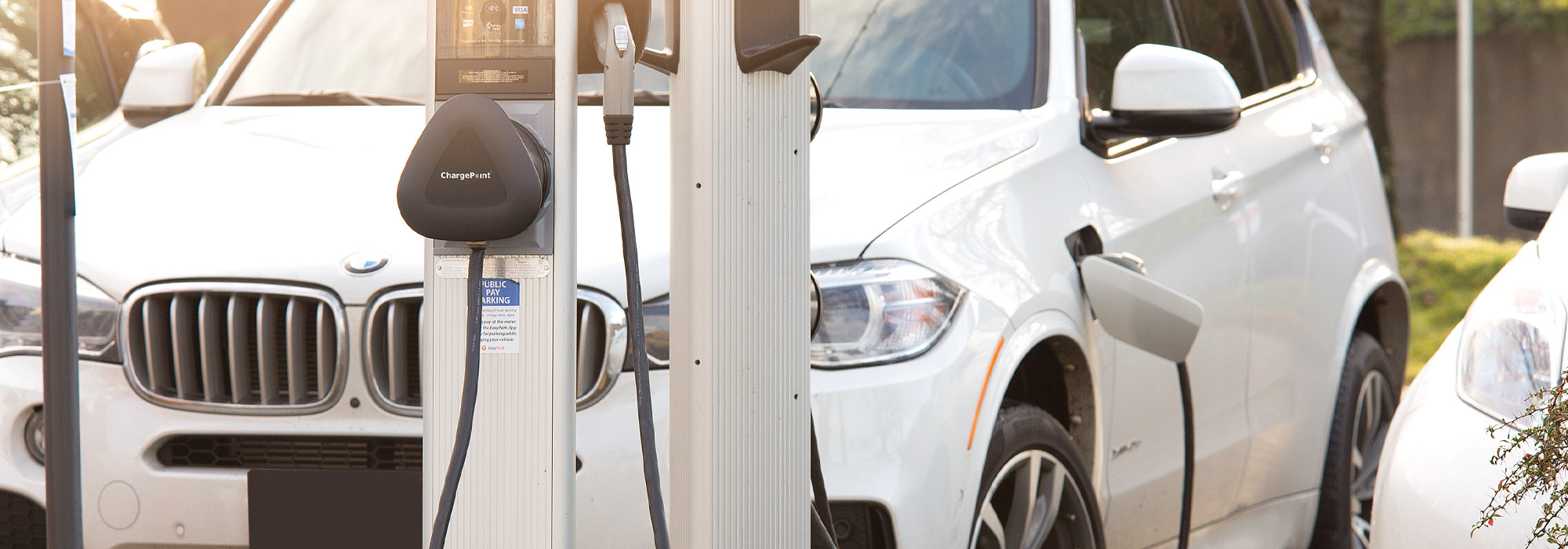
With an ambitious new climate plan to help Canada achieve net-zero emissions by 2050, two provincial bans on gas-powered cars set to take effect in 2035 and 2040, and a new U.S. president who plans to accelerate the adoption of electric vehicles, momentum is growing for reducing transport emissions in North America.
For the world to reach net-zero, more than half of all passenger car sales would need to be electric by 2030. Canada, however, is not even on track to meet even its more modest target of 30 per cent by then. Electric cars made up only 3.5 per cent of the light-duty vehicle market in the first half of 2020.
Insufficient action is compromising Canada’s commitment to keep the overall increase in global warming under 1.5 degrees – the optimum level set out in the Paris Agreement in 2015 compared with pre-industrial levels. The crisis is already here. Climate migration is becoming more common and every additional decimal point of global warming increases the risk of further drought, floods and extreme heat events, which will in turn increase inequalities around the world. Canada, as one of the world’s largest emitters of greenhouse gas (GHG) emissions per capita, needs to pull its weight.
Spotlight on transport emissions
It is no secret that reducing emissions from transport is a key to meet Canada’s targets. Transportation emissions increased 54 per cent between 1990 and 2018, while other sectors have been able to decrease emissions, with the exception of oil and gas. Moreover, Canadian vehicles have quite a reputation, currently recognized as the world’s dirtiest by the International Energy Agency. Decarbonizing transport would not only help Canada reach its climate goals, but it would also translate into health and economic benefits for Canadians, including better air quality.
There are several tools that will help Canada reduce its overall transportation emissions, some of which are already in place, such as carbon pricing and purchase incentives for zero-emission vehicles (ZEVs). Others are in the works, such as a clean fuel standard and charging infrastructure. These initiatives go hand-in-hand with provincial and municipal efforts to promote the use of public transit and other zero- or low-emission modes of transportation, such as cycling.
When it comes to wider adoption of ZEVs, renewed financial support is vital. In December’s climate plan, the federal government announced additional cash rebates for ZEV purchasing and investments in charging infrastructure, as well as tax writeoffs for commercial ZEV purchases. Ottawa has also pledged $295 million, matched by the Ontario government, toward retooling the Ford assembly plant in Oakville, Ont., to focus on electric vehicles (EVs), breathing new life into Canada’s declining automotive sector.
As concrete and ambitious as these commitments sound, spending millions of dollars will neither be sufficient to future-proof Canada’s auto industry nor give it the green boost it needs to address its current EV supply shortage and meet its electrification targets.
Recent months have seen the start of debates around a national ZEV strategy among members of the House of Commons standing committee on environment and sustainable development, with many civil society representatives, including the Pembina Institute, advocating for ambitious policies to accelerate electrification. One of the policy tools that has emerged from these conversations would be particularly useful to introduce in 2021 to increase ZEV availability and purchases: a national ZEV standard.
Why ZEV standards are effective
ZEV standards require that an increasing share of vehicles sold by auto manufacturers be zero-emission. They have proven to be efficient in leading EV manufacturing jurisdictions such as China, the European Union and California. Ten U.S. states also have a ZEV standard.
The inclusion of Canada would progressively shift North America in the direction of electrification, as automakers need to operate in a climate of certainty and “strongly (prefer) to sell the same vehicle models across Canada and the U.S.,” according to the International Council on Clean Transportation.
In a year-end interview with CBC, federal Minister of Environment and Climate Change Jonathan Wilkinson said he wouldn’t rule out ZEV supply standards, adding that due to a regionally integrated auto market, it is “one of the opportunities that the election of [Joe] Biden opens up for Canada.”
There is urgency for a ZEV standard in Canada, a policy that has been successfully implemented in Quebec and British Columbia. Without such a policy, Canada’s supply of ZEVs has remained both insufficient and unevenly distributed. Research by Dunsky Energy Consulting indicates that only 33 per cent of Canadian dealers currently have plug-in electric vehicles in stock – a figure that declines to less than 20 per cent for those not located in either British Columbia, Ontario or Quebec. The latter has had a ZEV standard since 2018, and currently has 57 per cent of Canada’s EV supply. Quebec’s leadership in ZEVs has been further demonstrated with its November announcement to ban gas-powered cars by 2035 as part of its Plan for a Green Economy. On the other side of the country, British Columbia’s plan to ban gas-powered car sales by 2040 is the same as Canada’s, but in contrast, the province has given itself the right policy tools to get there, including a ZEV standard.
Policy status quo is unlikely to lead to widespread electrification, with Transport Canada noting that under current conditions, ZEVs would make up five to 10 per cent of new light-duty vehicles sold as of 2030, well below the country’s 30 per cent target. Similarly, an Équiterre-commissioned report found that in the absence of a ZEV mandate (or similarly strong supply-focused policy), sales of plug-in electric vehicles will be highly dependent on purchase incentives, a crucial — and so far successful – policy strategy, but one that acts only on the demand side.
Listed by Simon Fraser University’s Sustainable Transportation Action Research Team as one of the top three types of “national policies (that) are likely to have a large impact on ZEV sales, while being reasonably acceptable to the public,” ZEV standards have various benefits such as sending “a strong transformational signal” to suppliers and consumers, as well as being cost-effective. Canada’s ZEV supply issue could be addressed through the adoption of a national ZEV standard, as noted in a report from Electric Mobility Canada.
A broader strategy needed
Although the COVID-19 pandemic caused car sales to drop briefly in early 2020, the latest numbers show that the industry is getting back on its feet — and the Canadian trend toward ownership of larger, higher-emitting vehicles is as strong as ever. Ottawa’s current discussions on ZEVs indicate that there is an appetite for laying out a roadmap towards wider ZEV adoption – an environmental and economic imperative in the near future.
A series of isolated and uncoordinated measures would simply not be enough. While a standard is no silver bullet, placing it at the core of a more comprehensive national ZEV strategy would benefit Canada’s GHG emission-reduction efforts and help address Canada’s ZEV supply issue. If Canada is to meet its climate targets, it needs to get on the electrification highway. Targets are not enough. As any driver knows, having a destination is one thing, but holding a map guarantees arrival.
This piece was written with research support from Cedric Smith, analyst at the Pembina Institute.
Photo: EV charging in Vancouver. Shutterstock.com, by SHUBIN.INFO








